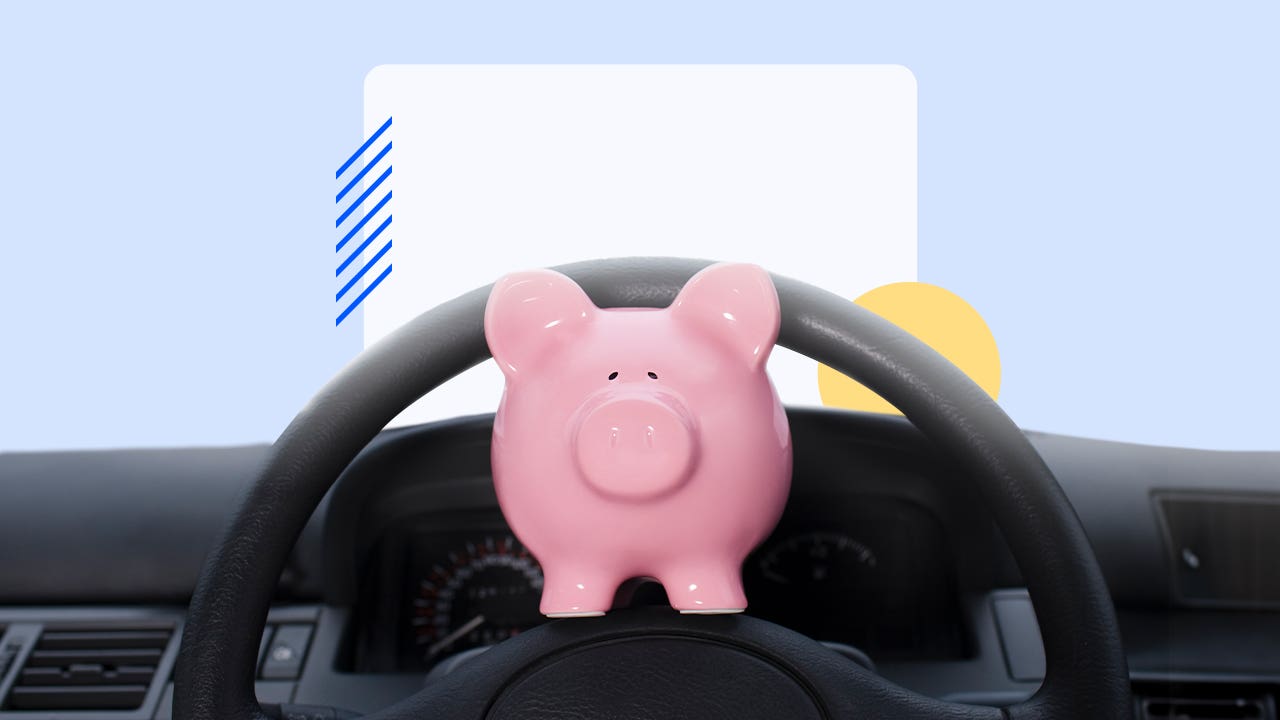How to save for a car: A step-by-step guide

The Bankrate promise
At Bankrate we strive to help you make smarter financial decisions. While we adhere to strict , this post may contain references to products from our partners. Here's an explanation for .
A car is a necessity for many Americans, as it may be their only means of getting to places like work, school, the grocery store or the pharmacy. But buying a car is no small purchase, with the average price of a new one reaching $48,759 in December 2023, according to Kelley Blue Book.
Deciding what vehicle to buy can involve meticulous research. It’s also important to decide how much money you’ll need on hand before making your purchase.
Here’s what you need to do to jumpstart your car savings plan.
Key takeaways
- How much you'll need to save for a car down payment depends on the price of the car and whether you plan to lease or buy it.
- Before buying a car, consider the monthly payment amount as well as other expenses such as insurance and gasoline.
- Based on when you plan to purchase the car, create a monthly savings plan and consider setting up automatic transfers to your savings account each paycheck.
1. Decide whether to lease or buy
There are several factors to consider when deciding to lease or buy. Leasing a vehicle means you’ll pay for the ability to drive it for a set number of years before returning it to the dealership. Financing a car means you could own it outright after you’ve made the required number of payments to the lender. Both options have their benefits and drawbacks.
Leasing vs. buying a car
| Advantages | Disadvantages | |
|---|---|---|
| Leasing a car |
|
|
| Buying a car |
|
|
2. Calculate your down payment
Before you head to the lot to buy a car, take the time to calculate your down payment. This amount will depend on your unique financial situation and the kind of car you want.
Many lenders require some money up front, and the more you can put down, the lower your monthly payments will be and the less interest you’ll owe.
“Aim to save between 10 and 20 percent for your car down payment,” says Nishank Khanna, chief marketing officer at Clarify Capital in New York. “Putting down a large down payment will help you reduce the total interest you end up paying on the loan and lower your monthly payment.”
If you’re seeking a newer car, try to put down closer to 20 percent.
“Generally speaking, a larger percentage down payment is recommended for new cars,” Khanna says. “You want to avoid being in a situation where depreciation outpaces your loan value.”
If you’re buying a used vehicle, 10 percent down might be sufficient.
3. Determine what monthly payment you can afford
The average monthly payments on new vehicle loans and used vehicle loans in the third quarter of 2023 were $726 and $533, respectively, according to Experian.
It’s important to figure out what monthly payment will fit into your budget, factoring in all your other regular expenses, such as housing, groceries, gasoline and utilities.
As a guideline, Edmunds recommends that your new car payment shouldn’t exceed 15 percent of your monthly take-home pay — 10 percent if the car is pre-owned or you’re leasing.
4. Consider additional costs
When considering what car to buy, don’t forget you’ll need to budget for the additional costs associated with vehicle ownership. These include:
- Auto insurance: This often can be paid monthly, every six months or yearly. Know how much insurance your state requires you to carry, and choose coverages and limits you’re comfortable with.
- Vehicle maintenance: Look for a car with maintenance costs within your means, and set aside money in your budget for this purpose. Some manufacturers conveniently include some maintenance visits in the purchase price of a car.
- Gasoline: Fuel can be a big chunk of your monthly expenses, with the national average price at $3.06 a gallon as of January 2024, according to the U.S. Energy Information Administration. National average gas prices will average $3.38 in 2024, according to GasBuddy projections. So while buying a car with efficient gas mileage can help you make fewer trips to the pump, it can also save you money.
- Charging: If you’re considering buying an electric vehicle (EV), estimate how much you’ll spend for charging. Using a Level 2 charger to fully charge an EV at home can cost $3-$6 in electricity per charge, while using a public fast charger for a full charge can run you $15-$25 per charge, Bankrate found. A full charge can typically go for more than 200 miles.
5. Establish a savings plan
You may have a vague savings goal in mind, but it’s important to put a precise number on it. With the help of Bankrate’s auto down payment calculator, you can determine how much you’ll need to save every month.
Once you have a number in mind, here are some ways to help you set aside the money you’ll need:
- Decide how much to save each month: Make sure you’re saving enough money every month to meet your goal. That could require reducing spending through means such as canceling unneeded subscriptions and eating more meals at home.
- Find the best place for your savings: Consider opening a savings account at a bank or credit union apart from where you keep your checking account, which may make it less tempting to dip into your savings.
- Schedule automatic transfers: Most banks allow you to set up automatic transfers from checking to savings, making it convenient to send a portion of your paycheck straight to savings.
The best savings accounts pay about 5.25% APY and higher. An account with a higher yield will help you build your savings faster.
6. Trade in or sell your old car
Trading in your old car at the dealership will bring down the purchase price of your new one. It pays to calculate the value of your old vehicle before finding out what the dealer determines it’s worth. This can help you negotiate with the dealer to get a fair price. Appraisal tools such as Kelley Blue Book and Edmunds can be used to calculate your vehicle’s value.
You may find you can get more money by selling your car privately than by trading it in at the dealership. However, this may take significantly more time, as you’ll need to find the right buyer. Like when trading in your car, you’ll want to do research on the car’s value to come up with a fair asking price.
7. Learn how to negotiate a deal
Knowing how much you can spend and getting preapproved for financing before visiting the dealership can help you approach negotiations with a salesperson with confidence.
Stand your ground during negotiations if the salesperson is quoting you a price on a vehicle that you feel could be lower, based on your research. Getting competing bids from multiple dealerships can also help ensure you’ll get the best possible price.
You might take some of the stress out of negotiating by doing it online. Some dealerships can be contacted via email or text, and some provide an online chat function through which you can talk with a representative about things like pricing.
Buyers who would rather handle the entire process online can purchase from a dealership that allows for electronic signing of paperwork and can even deliver the vehicle to your home.
Bottom line
You can take the stress out of buying a car when you save for a proper down payment and don’t bite off more than you can chew. A bit of research and careful planning can go a long way.
Related Articles



